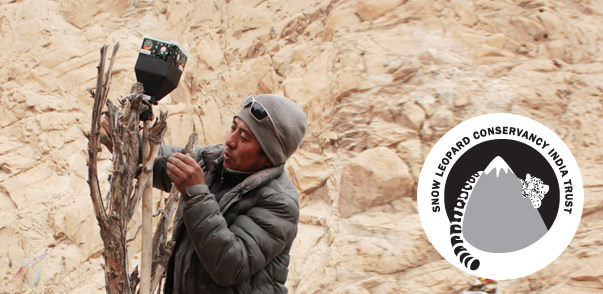Zanskar, Ladakh in northern Indian state of Jammu and Kashmir is one of the most isolated valleys in the Trans-Himalayas. People here have been living an austere life for several millennia. The region also supports a diverse range of flora and fauna. The Himalayan brown bear, is one of the top predators in the region, and it plays a critical role in maintaining the ecological integrity of the region. However, the local communities have increasingly been reporting livestock depredation and property damage by the animal.

The Snow Leopard Conservancy - India Trust (SLCT-IT) has been working with local communities all across ladakh for conservation of snow leopards for over 15 years. It is only in the past five years that we have recorded sudden rise in villagers reporting conflict with the Himalayan brown bears. Although the causes of this conflict are not clear, the consequences are apparent largely in the form local people's growing negative attitude towards the bear, which is disconcerting for conservationists. Snow Leopard Conservancy India Trust in collaboration with like-minded organisations are exploring the causes of this growing conflict. Anecdotal reports suggests that the changing weather pattern in the region is affecting its annual cycle. For instance, bears are coming out of their dens earlier in the spring than usual and delaying denning in the autumn, perhaps due to warming temperature. Brown bears are known to be active throughout the year in warmer areas. Resource scarcity and growing human population could also be a factor influencing its behaviour.
The Himalayan brown bears, like the european brown bears, go in hibernation during winters. To survive this winter period, the bears need to eat and store fats before they go to hibernate. The changing weather pattern often results in lack of available natural food and as a result the bears get attracted to villages where they end up preying on livestock or granaries. Bear specialists suggest that the European brown bear consumes approximately 9,000 kcals/day in late spring and as the hibernation period approaches they go for ~20,000kcals/day eating almost 24 hours a day. If this also holds true for the Himalayan brown bear, then there must be a food scarcity caused by growing human population, domestic livestock and climate vagaries. large scale depletion of their natural food in the wild and to compensate that they are turning towards villages.
Although we understand the survival needs of the bear, the resulting loss to the villagers can not be neglected and there is a need to provide immediate relief measure to make sure the conflict does not escalate and lead to prosecution of these unique animals. SLC-IT has been working with local communities all across ladakh and believe that the best conservation practice is the one that involves the local communities.

As first immediate mitigation measure we aim to setup deterrent lights in the conflict villages. We already have tried these lights in a few villages in the Kargil district, and they seem to be effective at least in the short run. While these deterrent lights will serve as a stop-gap measure to reduce the human-bear conflict , we will work concurrently with the local communities to come up with a long-term sustainable plan, which would entail understanding the nature conflict in depth.











